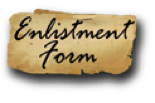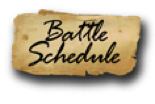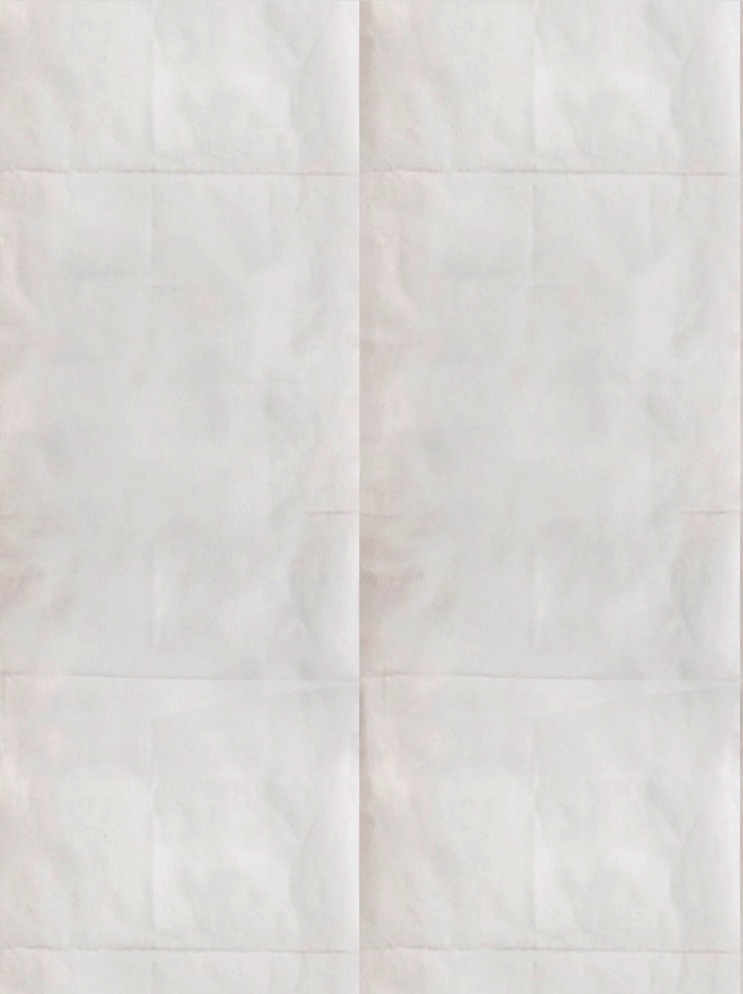

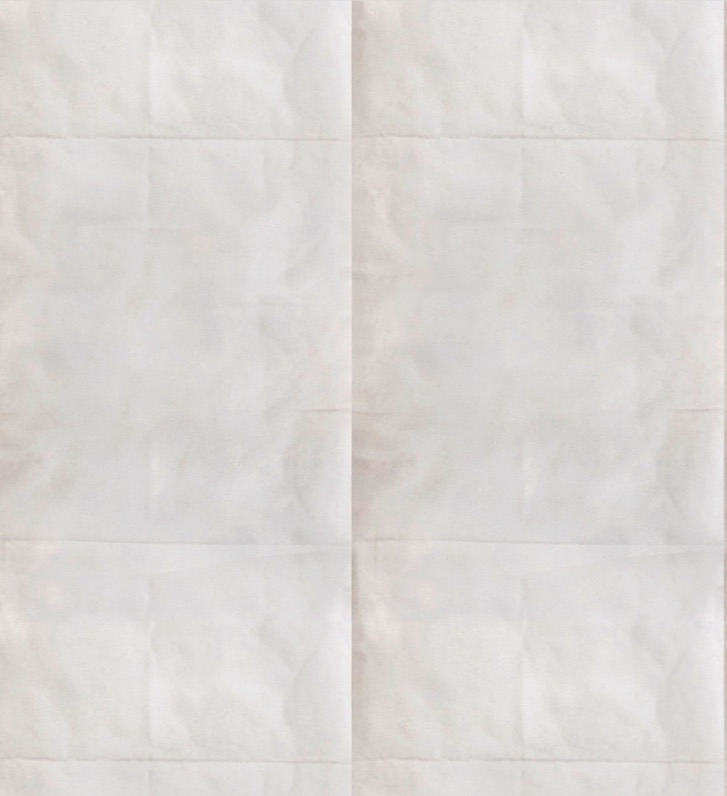
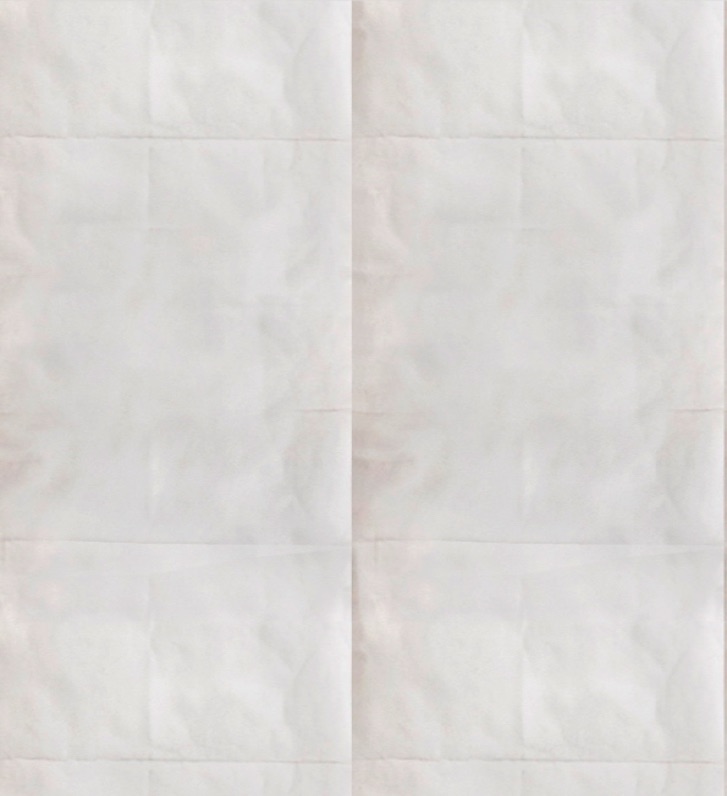
II. REVIEW OF A BATTALION OF INFANTRY.
349. Preparatory to a review, the Adjutant will cause a camp-color to be placed 80 or 100 paces, or more, according to the length of the line, in front of, and opposite to, where the centre of the battalion will rest, where the reviewing officer is supposed to take his station; and, although he may choose to quit that position, still the color is to be considered as the point to which all the movements and formations are relative. 350. The Adjutant will also cause points to be marked, at suitable distances, for the wheelings of the divisions; so that their right flanks, in marching past, shall only be about four paces from the camp-color, where it is supposed the reviewing officer places himself to receive the alate. 351. The battalion being formed in the order of battle, at shouldered arms, the Colonel will command, 1. Battalion, prepare for review! 2. To the rear, open order. 3. MARCH! At the word MARCH, the field and staff officers dismount; the company officers and the color-rank advance four paces in front of the front rank, and place themselves opposite to their respective places, in the order of battle. The color-guard replace the color-rank. The staff officers place themselves, according to rank, three paces on the right of the rank of company officers, and one pace from each other; the music takes post as at parade. The non-commissioned staff take post one pace from each other, and three paces on the right of the front rank of the battalion. 352. When the ranks are aligned, the Colonel will command, FRONT! and place himself eight paces, and the Lieutenant-Colonel and Major will place themselves two paces, in front of the rank of company officers, and opposite to their respective places in the order of battle, all facing to the front. 353. When the reviewing officer presents himself before the centre, and is fifty or sixty paces distant, the Colonel will face about, and command, Present-ARMS! and resume his front. The men present arms, and the officers salute, so as to drop their swords with the last motion of the firelock. The noncommissioned staff salute by bringing the sword to a poise, the hilt resting on the breast, the blade in front of the face, inclining a little outward. The music will play, and all the drums beat, according to the rank of the reviewing officer. The colors only salute such persons as, from their rank and by regulation (see Article XXIX.), are entitled to that honor. If the reviewing officer be junior in rank to the commandant of the parade, no compliment will be paid to him, but he will be received with arms carried, and the officers will not salute as the column passes in review. 354. The reviewing officer having halted, and acknowledged the salute of the line by touching or raising his cap or hat, the Colonel will face about and command, Shoulder-ARMS! when the men shoulder their pieces; the officers and non-commissioned staff recover their swords with the last motion, and the Colonel faces to the front. 355. The reviewing officer will then go toward the right, the whole remaining perfectly steady, without paying any further compliment, while he passes along the front of the battalion, and proceeds round the left 'flank, and along the rear of the file-closers, to the right. While the reviewing officer is going round the battalion, the band will play, and will cease when he has returned to the right flank of the troops. 356. When the reviewing officer turns off, to place himself by the camp-color in front, the Colonel will face to the line and command. 1. Close Order. 2. MARCH! At the first command, the field and company officers will face to the right-about, and at the second command, all persons, except the Colonel, will resume their places in the order of battle; the field and staff officers mount. 357. The reviewing officer having taken his position near the camp color, the Colonel will command, 1. By company, right wheel. 2. Quick-MARCH! 3. Pass in review 4. Column, forward. 5. Guide right. 6. MARCH! The battalion, in column of companies, right in front, will then, in common time, and at shouldered arms, be put in motion; the Colonel four paces in front of the Captain of the leading company; the Lieutenant Colonel on a line with the leading company; the Major on a line with the rear company; the Adjutant on a line with the second company; the Sergeant-Major on a line with the company next preceding the rear-each six paces from the flank (left) opposite to the reviewing officer; the staff officers in one rank, according to the order of precedency, from the right, four paces in rear of the column; the music, preceded by the principal musician, six paces before the Colonel; the pioneers, preceded by a Corporal, four paces before the principal musician; and the Quartermaster Sergeant two paces from the side opposite to the guides, and in line with the pioneers. 358. All other officers and non-commissioned officers will march past in the places prescribed for them in the march of an open column. The guides and soldiers will keep their heads steady to the front in passing in review. 359. The color-bearer will remain in the ranks while passing and saluting. 360. The music will begin to play the command to march, and after passing the reviewing officer, wheel to the left out of the column, and take a position opposite and facing him, and will continue to play until the rear of the column shall have passed him, when it will cease, and follow in the rear of the battalion, unless the battalion is to pass in quick time also, in which case it will keep its position. 361. The officers will salute the reviewing officer when they arrive within six paces of him, and recover their swords when six paces past him. All officers, in saluting, will cast their eyes toward the reviewing officer. 362. The Colonel, when he has saluted at the head of the battalion. will place himself near the reviewing officer, and will remain there until the rear has passed, when he will rejoin the battalion. 363. The colors will salute the reviewing officer, if entitled to it, when within six paces of him, and be raised when they have passed by him an equal distance. The drums will beat a march, or ruffle, according to the rank of the reviewing officer, at the same time that the colors salute. 364. When the column has passed the reviewing officer, the Colonel will direct it to the ground it marched from, and command, Guide left, in time for the guides to cover. The column having arrived on its ground, the Colonel will command, 1. Column. 2. HALT! form it in order of battle, and cause the ranks to be opened as in paragraph 351. The review will terminate by the whole saluting as at the beginning. 365. If, however, instructions have been previously given to march the troops past in quick time also, tile Colonel will, instead of changing the guides, halting the column, and wheeling it into line, as above directed, give the command, 1. Quick-time. 2. MARCH! In passing the reviewing officer again, no salute will be offered by either officers or men. The music will have kept its position opposite the reviewing officer, and at the last command will commence playing, and as the column approaches, will place itself in front of, and march off with the column, and continue to play until the battalion is halted on its original ground of formation. The Review will terminate in the same manner as prescribed above. 366. The Colonel will afterward cause the troops to perform such exercises and maneouvres as the reviewing officer may direct. 367. When two or more battalions are to be reviewed, they will be formed in parade order, with the proper intervals, and will also perform the same movements that are laid down for a single battalion, observing the additional directions that are given for such movements when applied to the line. The Brigadier-General and his staff, on foot, will place themselves opposite the centre of the brigade; the Brigadier-General two paces in front of the rank of Colonels; his aid two paces on his right, and one retired; and the other brigade staff officers, those having the rank of field officers, in the rank of Lieutenant-Colonels and Majors; and those below that rank, in the rank of company officers. 368. In passing in review, a Major-General will be four paces in front of the Colonel of the leading battalion of his division; and the Brigadier General will be on the right of the Colonels of the leading battalions of their brigades; staff officers on the left of their Generals. 369. When the line exceeds two battalions, the reviewing officer may cause them to march past in quick time only. In such cases the mounted officers only will salute. 370. A number of companies less than a battalion will be reviewed as a battalion, and a single company as if it were with the battalion. In the latter case, the company may pass in column of platoons. 371. If several brigades are to be reviewed together, or in one line, this further difference will be observed: the reviewing personage, joined by the General of the division, on the right of his division, will proceed down the line, parallel to its front, and when near the Brigadier-Generals respectively, will be saluted by their brigades in succession. The music of each, after the prescribed salute, will play while the reviewing person age is in front, or in rear of it, and only then. 372. In marching in review, with several battalions in common time, the music of each succeeding battalion will commence to play when the music of the preceding one has ceased, in order to follow its battalion. When marching in quick time, the music will begin to play when the rear company of the preceding battalion has passed the reviewing officer. 373. The reviewing officer or personage will acknowledge the salute by raising, or taking off, his cap or hat, when the commander of the troops salutes him; and also when the colors pass. The remainder of the time occupied by the passage of the troops he will be covered. 374. The review of Cavalry and Artillery will be conducted on similar principles, and according to the systems of instruction for those Arms of Service.

